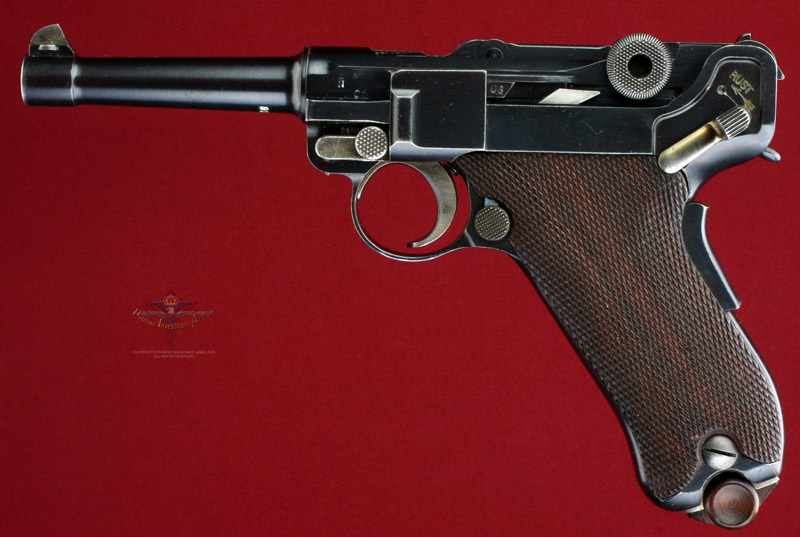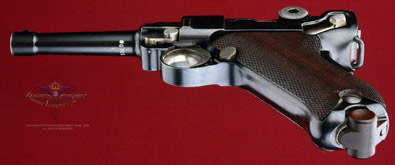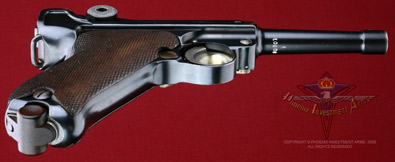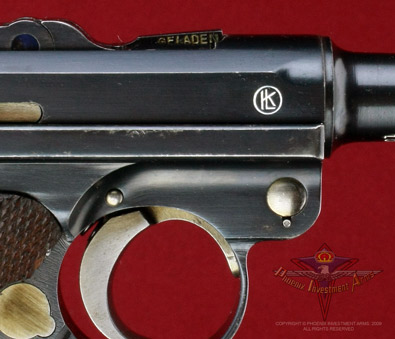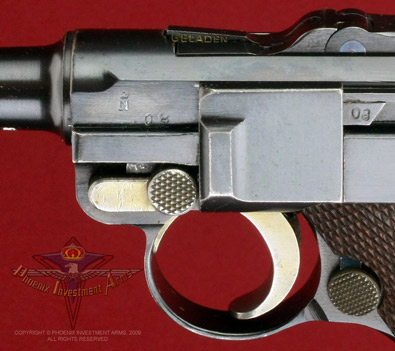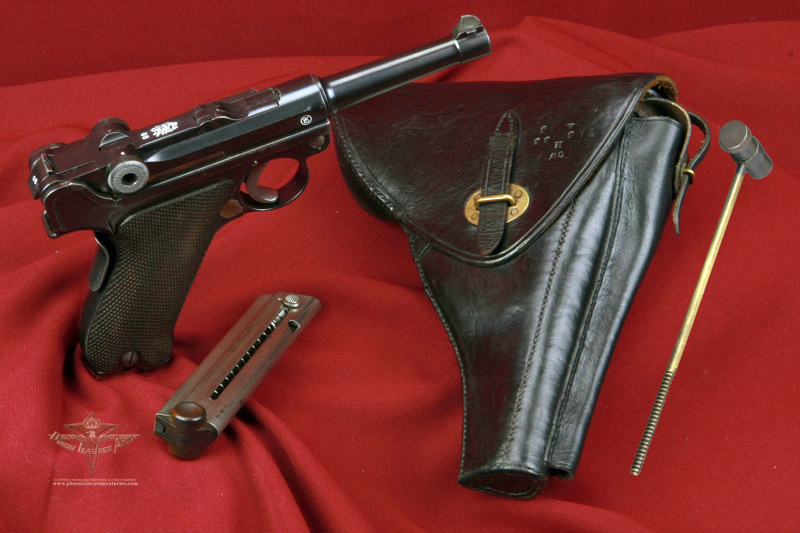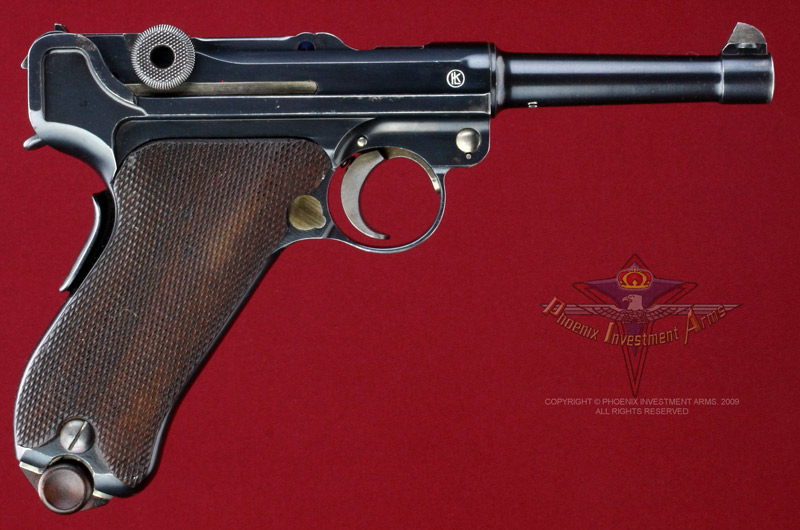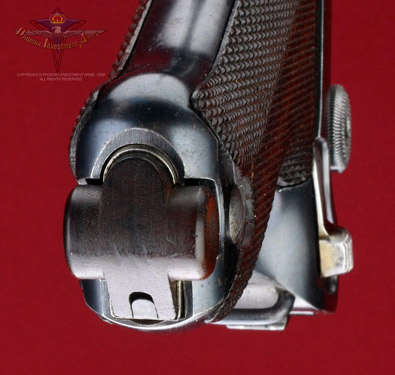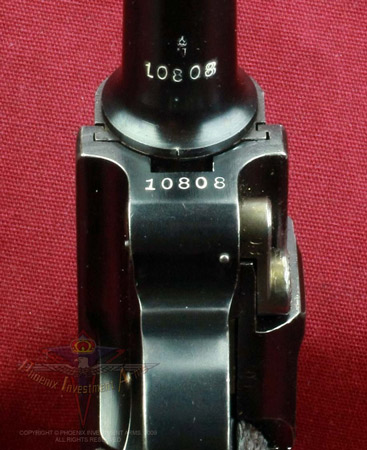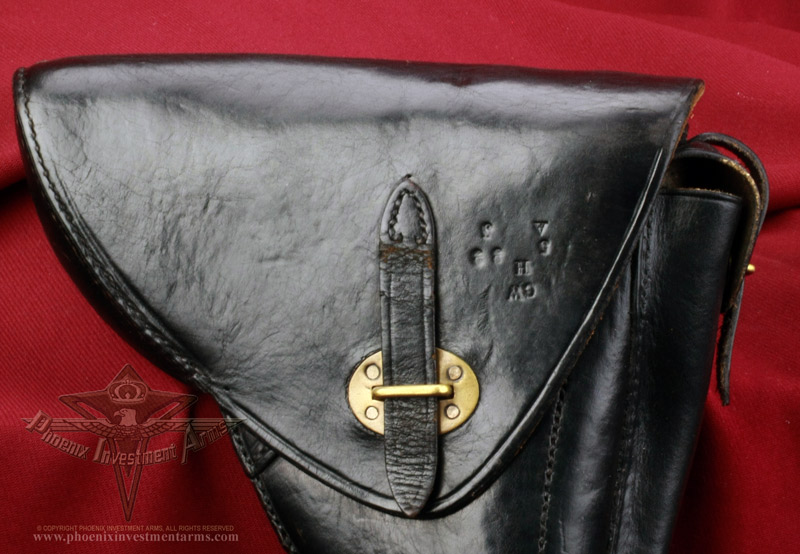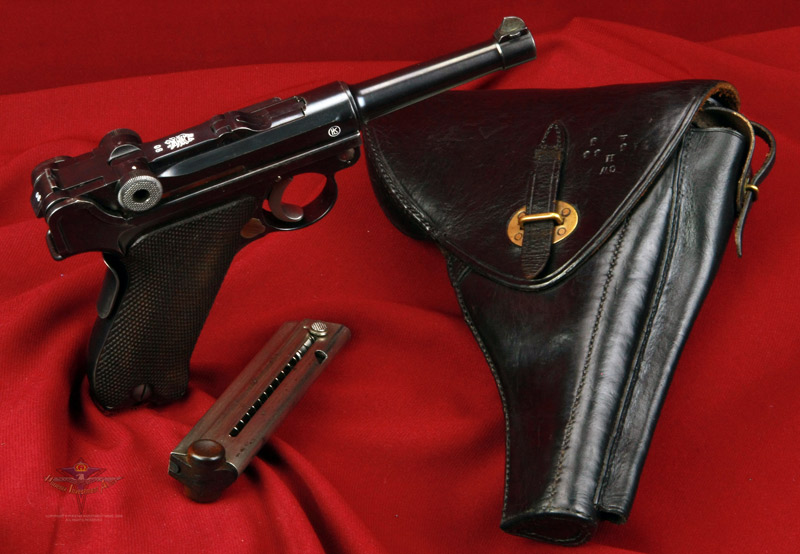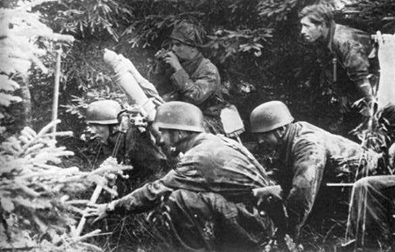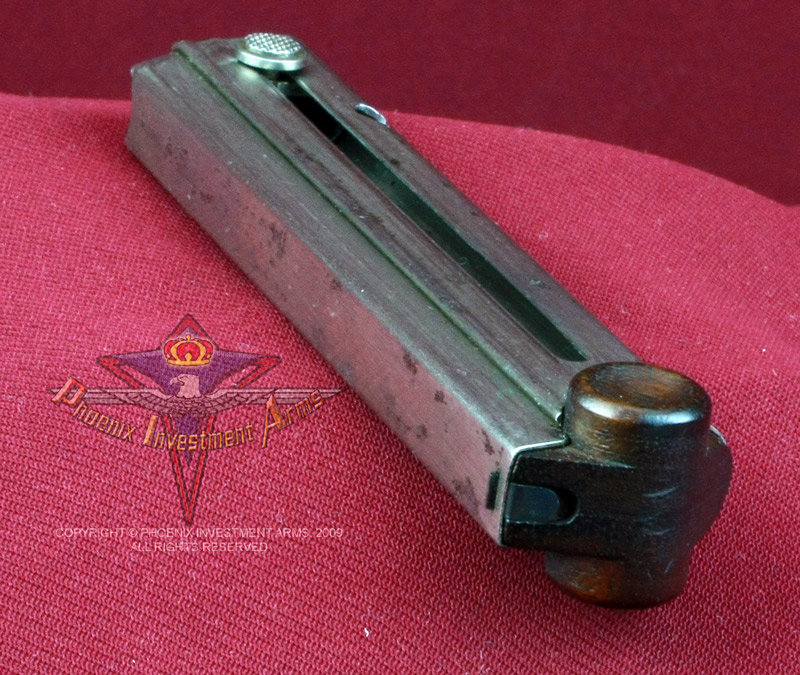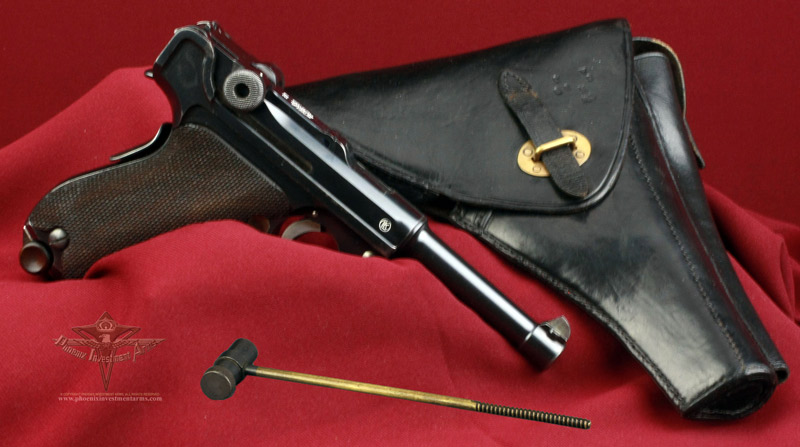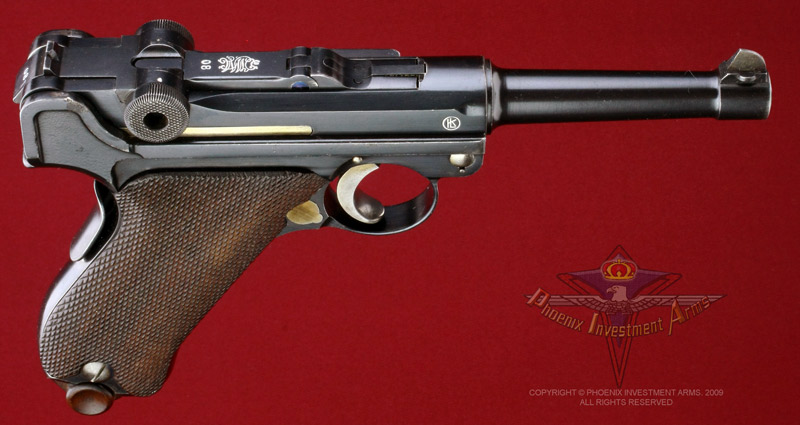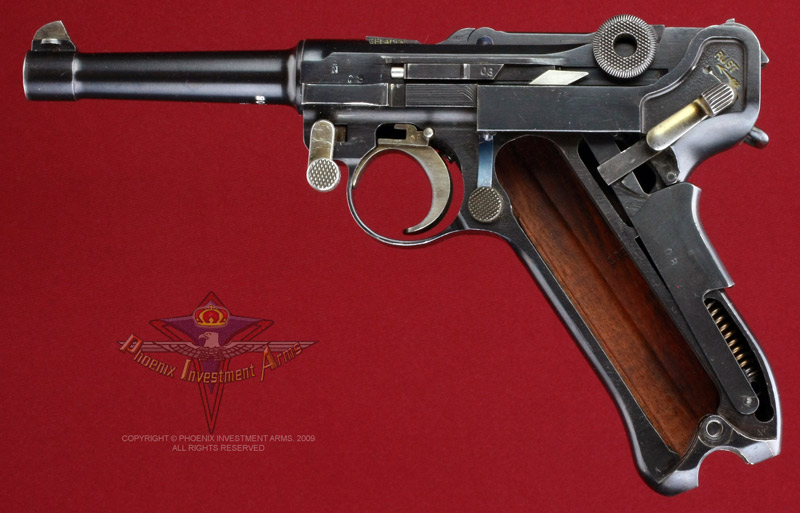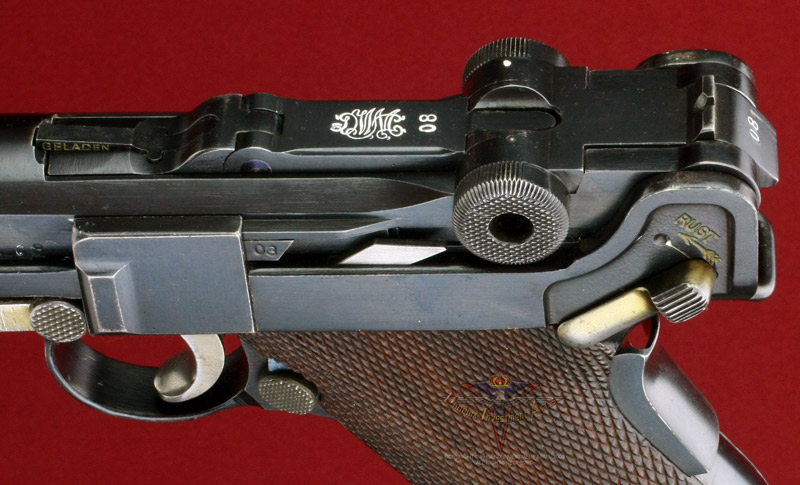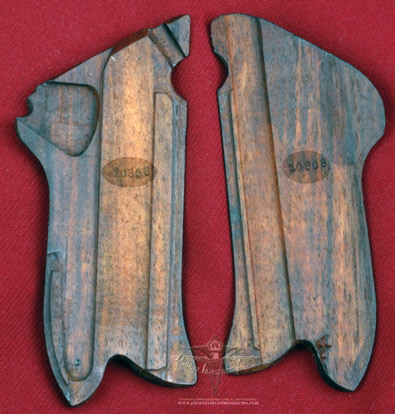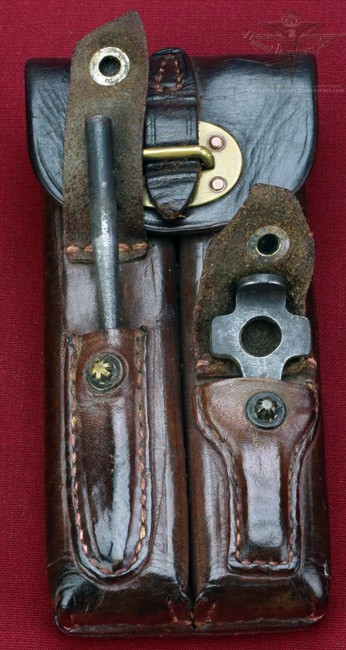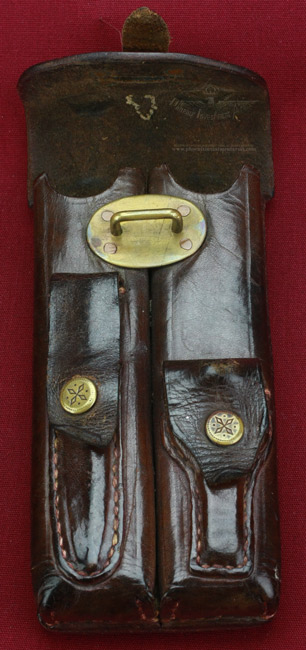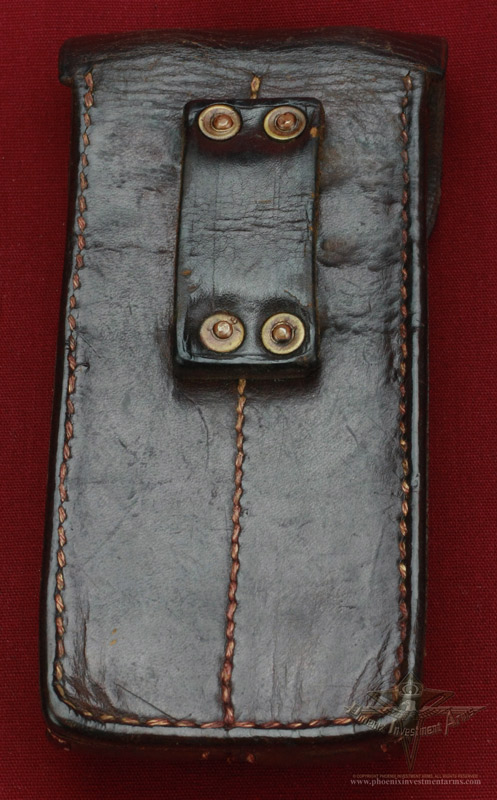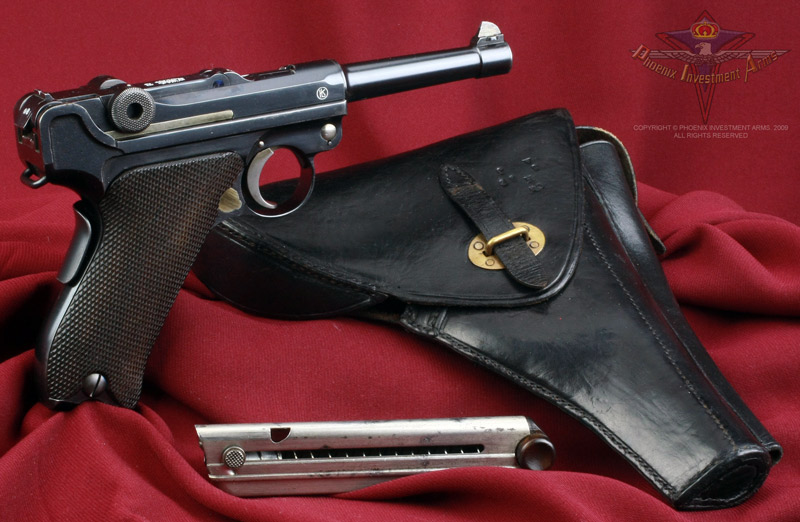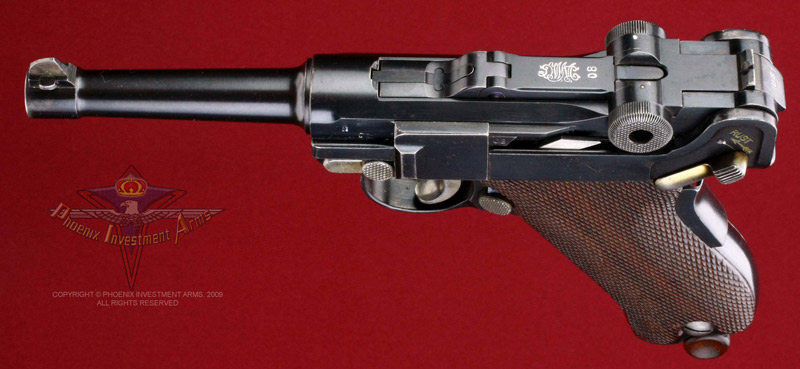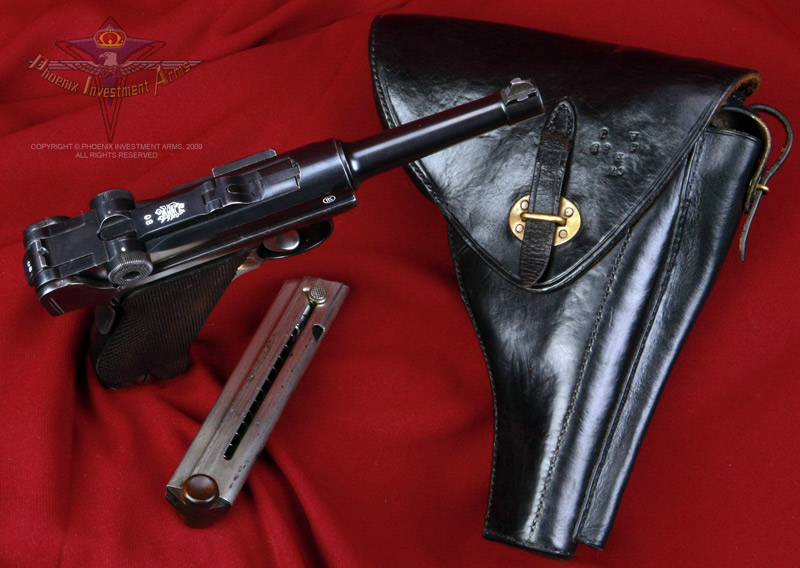 |
|
This is a pre-WWII Parabellum manufactured by DWM for a contract to the Dutch for the East Indies Army. It was designated the M11 by the Dutch and only 3,820 were delivered in August/September 1928 within the range of 10182 to 14001 (inclusive). They had the 102mm barrel, standard 1906 squeeze-grip safety, were 9mm and lacked the lug for a butt-stock. (1080) |
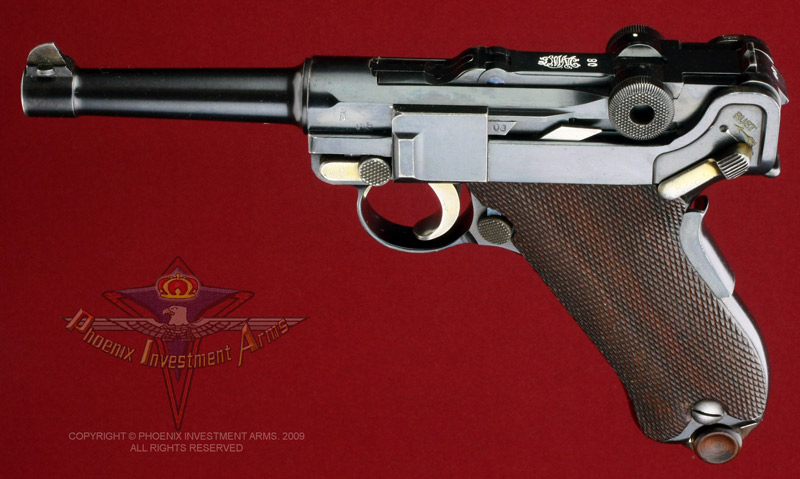 |
NOTE: Photographs taken today
with the high mega-pixel camera show more than we sometimes can see with
the human eye. Magnified close-ups show us tool marks and natural
surface conditions that one normally doesn't see in the ordinary
handling of the weapon. Photographs are
copyrighted, all rights reserved, any extraction, reproduction or
display of gun pictures without the express consent of the Phoenix
Investment Arms is strictly prohibited. Thank you for your cooperation. |
